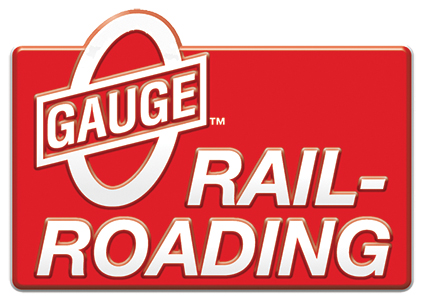Replies sorted oldest to newest
Any model train transformer should work, even a HO type with AC output for accessories.
Any transformer with AC voltage outputs will do. That's basically all you need. NEVER try to power AC items with DC and ALWAYS run the white/red wires to the hot terminal output post, and the black wires to the ground output post. Most transformers with fixed voltage outputs have only one setting for output voltage which is enough usually. Others like Lionel's ZW allow to vary it quite easily.
Be careful. The controler is what gets 12-14 volts of power. The controller has anON/OFF rocker switch and three push buttons for the three actions. I'm quite sure no AC power goes to the modules. There are circuit boards in the controller.
Kennyb, they're probably off on Sunday. As seen in the manual posted on Lionel's website, the three plugs you see go into the controller.
The power is fed into the controller per instructions in the manual.
The controller is fairly basic so if you don't find one, you can make your own.
Attachments
Kennyb, when you go to Lionel's website and go to the manual you will see that those three please go into the controller. You feed the power to the controller. The controller is basic enough you can make your own if you can't find a controller.
Let me add to this since I'm repairing a steam clean and wheel grind shop that someone ran without the controller, cut off the wires, and then promptly blew components on the smoking tank section of the accessory PCBs.
THEY ARE DC ONLY!!!! Now yes, absolutely, you feed AC into the controller box, but the actual individual accessories are using DC and do not have rectifiers in them, they use DC polarized caps, DC can motors, and you will blow the transistors on the boards, likely blow the polarized caps if you connect AC to the 3pin plugs. If I find the person who did this to this accessory, I'm going to give them an earful and worse, the whole reason I even came here to the topic is hope of finding that specific plug that they cut off.
Luckily, Lionel seems to have reused common components on these PCBs, so the small transistors were S8050 and the larger one was a TIP31- again, both common components used across many PCBs Lionel has built and I have been repairing lately. The mistake literally blew the S8050 in half- and luck was on my side the etched face with the part number was left intact.
The wiring scheme is that the wires all have markings on the 3 wire ribbon cable. One is all ----, the center is ++++, and the last one is a wider spaced - - - -.
- - - -= DC ground.
+++ = +DC for lighting
------ = +DC for motor or action on that accessory
Inside the control box with switches, it's nothing more than 4 diodes o make a bridge rectifier, a large 25V rated DC capacitor to filter the DC, 3 momentary switches to operate the action on each accessory.
The wiring color code inside the controller is
black= ground
red= +DC for lights constant on
yellow= momentary switched DC+ for the action
The white connector, the 2 pins are spaces close together, the 3rd pin has a gap between it and the other pins.
DC GND is the outermost pin of the white connector in the side by side pin area
DC + constant on for lights is the center pin
The lone spaced out pin of the connector is the DC+ for the action of that accessory
And, since asked, this is one of the few accessories Lionel makes that can be run on DC only. This is because again, all AC coming into the controller box is rectified all outputs are DC, and since this isn't one of those accessories that goes opposite directions (like the crane) they are not cheating using half wave diode rectification to get both positive and negative DC outputs compared to a common ground. Also keep in mind the manual says 12-14V AC- but that is an RMS value since it is AC. That in turn actually means a peak voltage that the accessory uses is different. https://testguy.net/content/27...erage-vs-RMS-Voltage
Thus 1.414 x Vrms= Vp, meaning 12V RMS AC, rectified full wave to DC with a filter cap is roughly 17V DC, 14V AC RMS is 20V DC- which is why the capacitor is a 25V max, and should a user do something like connect to track power and shoot 18V AC RMS into this, that cap and the others like it will go bang. Yes, I'm neglecting the 0.7V drop across each diode, so minus 1.5V combined (both diodes) to he above, but for rough numbers, it appears that it's at least 16V DC to roughly 20V DC required for operation within specs.
Hope this helps somebody.
Also, parts reference but does not give the detail about wiring or voltage like I just gave.




